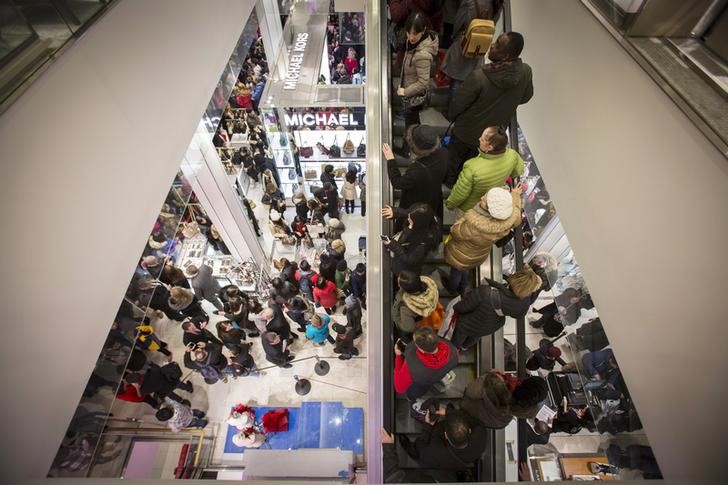By Lucia Mutikani
WASHINGTON (Reuters) - U.S. business investment spending plans fell for a seventh straight month in March, weighed down by a strong dollar and lower energy prices, suggesting the economy was struggling to rebound from a recent soft patch.
The report from the Commerce Department on Friday came on the heels of lukewarm data on retail sales, employment and housing starts that have hinted at insufficient growth momentum that could prompt the Federal Reserve to delay raising interest rates until later this year.
"This is consistent with a sluggish rebound in growth. It's shedding more doubt on the Fed's willingness to raise rates mid-year," said Gennadiy Goldberg, an economist at TD Securities in New York.
Non-defence capital goods orders excluding aircraft, a closely watched proxy for business spending plans, declined 0.5 percent last month after a revised 2.2 percent drop in February, which was the biggest decline since July 2013.
The so-called core capital goods orders were previously reported to have declined 1.1 percent in February. Economists had forecast these orders gaining 0.3 percent last month.
The weakness mirrors other manufacturing indicators such as industrial production and various regional factory surveys.
The dollar fell against a basket of currencies after the report, while prices for U.S. government debt rose. U.S. stocks were trading marginally higher as investors were cheered by strong results from Google Inc (O:GOOGL), Amazon.com Inc (O:AMZN) and Microsoft Corp (O:MSFT).
The Fed has kept overnight interest rates near zero since December 2008, but a number of officials have said an increase will likely be considered at its June policy-setting meeting.
MANUFACTURING STRUGGLING
Manufacturing has been undermined by the buoyant dollar, whose 12.1 percent appreciation against the currencies of the United States' main trading partners since last June has eroded overseas profits of multinational companies like Procter & Gamble Co (N:PG).
The world's largest household products maker on Thursday reported a 8.3 percent decline in quarterly sales.
In addition, lower energy prices have cut into domestic oil production, reducing demand for equipment by oil-field companies, including Schlumberger (N:SLB) and Halliburton (N:HAL).
Schlumberger, the world's No.1 oil-field services provider, has cut its capital expenditure plans for this year by about $500 million to $2.5 billion. Halliburton slashed its capex by about 15 percent to $2.8 billion.
"Cheap oil and a strong dollar, while beneficial to consumers, are putting serious pressure on manufacturers," said Jay Morelock, an economist at FTN Financial in New York.
The dollar and reduced capex spending by oil-field firms combined with a harsh winter and softer global demand to slow U.S. growth at the start of the year.
In March, shipments of core capital goods - which are used to calculate equipment spending in the government's gross domestic product measurement - fell 0.4 percent after a downwardly revised 0.1 percent gain in February.
Shipments in February were previously reported to have risen 0.3 percent. As a result, JPMorgan (NYSE:JPM) lowered its first-quarter GDP growth estimate by one-tenth of a percentage point to a 0.6 percent annual pace.
Barclays (LONDON:BARC) trimmed its forecast to a 1.1 percent rate from a 1.2 percent pace. The economy expanded at a 2.2 percent pace in the fourth quarter. The government will publish its snapshot of first-quarter GDP next Wednesday.
Pointing to prolonged weakness in manufacturing, which accounts for about 12 percent of the U.S. economy, unfilled orders for core capital goods fell for a second straight month in March after barely rising in January.
"We have not seen the full ramifications of the strong dollar and the drop in oil-related investment, so that could continue to play out," said Thomas Costerg, a U.S. economist at Standard Chartered (LONDON:STAN) Bank in New York. "The focus is now on services and consumers in the hope that they are going to pick up the tab. So far we are not seeing signs of that."
A surge in transportation equipment buoyed overall orders for durable goods - items ranging from toasters to aircraft that are meant to last three years or more - which rebounded 4.0 percent last month. That was the largest increase since July last year and followed a 1.4 percent decline in February.
